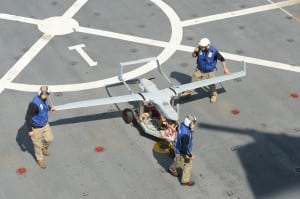
Navy and Marine Corp commanders fresh off a deployment in the Middle East said their Amphibious Ready Group and Marine Expeditionary Unit were equipped to take on missions including embassy evacuations from Yemen and joint operations with special operators. However, there was one piece of equipment they wanted but didn’t have: an intelligence, surveillance and reconnaissance asset such as a drone."Organic ISR would have been extremely helpful during this last deployment. We did not have access to that,” Navy Capt.…













